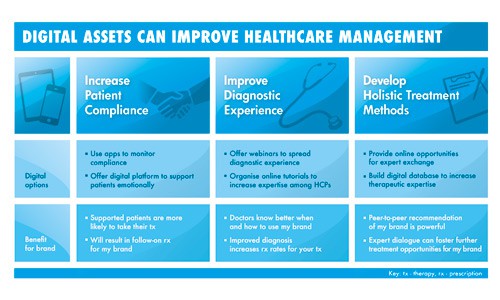 While the proportion of everyday transactions conducted by mobile and online is increasing, it is only logical that the resource-poor healthcare sector should also ‘boldly go’ into formerly unknown territories. Statistics published by the American Hospital Association in 2015 show that, in 2013, hospitals increasingly turned to technology-enabled care. Resulting from its implementation, the AHA estimates an overall saving of up to $6 billion per year from switching to technology-assisted surgery visits.
While the proportion of everyday transactions conducted by mobile and online is increasing, it is only logical that the resource-poor healthcare sector should also ‘boldly go’ into formerly unknown territories. Statistics published by the American Hospital Association in 2015 show that, in 2013, hospitals increasingly turned to technology-enabled care. Resulting from its implementation, the AHA estimates an overall saving of up to $6 billion per year from switching to technology-assisted surgery visits.
It is not all about saving though. A 2015 Deloitte forecast estimates considerable growth opportunities in the global mobile and digital health market, with a forecasted rise from $2.4 billion in 2013, to a potential $21.5 billion in 2018. This would represent a compound annual growth of 54.9%.
Why should pharma join?
There is no need for pharma to leave these spoils to the pioneers – the Apples and Googles of this world. A sector that has accumulated established partnerships with scientific and clinical experts and insights into users’ behaviour has a big advantage in the mobile and digital market. Now is the time to build on that and make relationships with doctors even more durable.
The future lies in tailored services that offer focused information and individualised solutions that are driven by demand. In short, applications that help patients and doctors cope with the challenges of daily life. In the time-poor environment doctors have to work in, it is vital to go beyond information and offer service and support. The time of just providing piles of information has gone and if we are honest, this was never the way to go. Successful digital solutions should therefore start with listening to your clearly defined target groups and identifying their unmet needs.
But how exactly can you do that in the mobile and digital world?
Here are a number of supportive and educational tools that reflect daily practice and offer high value to HCPs because they offer excellent training opportunities in an environment mirroring everyday clinical practice:
Virtual hospital teaching with real patient cases
Experts in the field share their experience by commenting on interactive patient cases studies. The cases can be viewed online and in different view modes or downloaded to a tablet. Learning progress can be monitored with test-yourself questions.
Build your diagnostic expertise with experts
Simulating the situation in an imaging lab, a library of high-resolution HRCT files (complete stacks) covering diseases with similar appearance provides a virtual exercise ground for clinicians. Intended for regular practice, physicians can come up with their own diagnosis and compare it to those of indication experts who explain and interpret lesions, etc. The experts also put the clinical data into perspective and offer differential and final diagnosis.
Global webinars
They are especially popular in smaller indications where only few experts exist worldwide and physicians’ motivation is high to connect with leading experts. They can also view multimedia presentations and participate in online polls, as well as in the plenary discussion. Their reach is global as they can be adapted to suit different languages and time zones.
There is often only a little time for doctors to offer their patients detailed information and emotional support, therefore supplementary digital materials for patients provide good value for both parties.
Multichannel offerings for patients, their families and caregivers
They include websites, interactive eBooks, and other downloadable materials such as real-life patient exchange and diary apps.
As a consequence, this means focusing on smaller and more individualised solutions – a focus that mirrors the conditions of the future pharma market, where we expect a turnaround from blockbuster to niche solutions and rare disease marketing. This makes it even more important to link your efforts with effective SEO/SEM so you make sure your target audiences are made aware of them. It is also key to approach digital healthcare from a patient-focused perspective, as the diagram above suggests.
The potential benefits for the brand manager/scientific relations officer are huge: by enabling physicians to diagnose and treat patients better, you enable them to be a better prescriber for your brand: a win-win situation for all.

Article by Ingo Barmsen and Christian Guhlke





